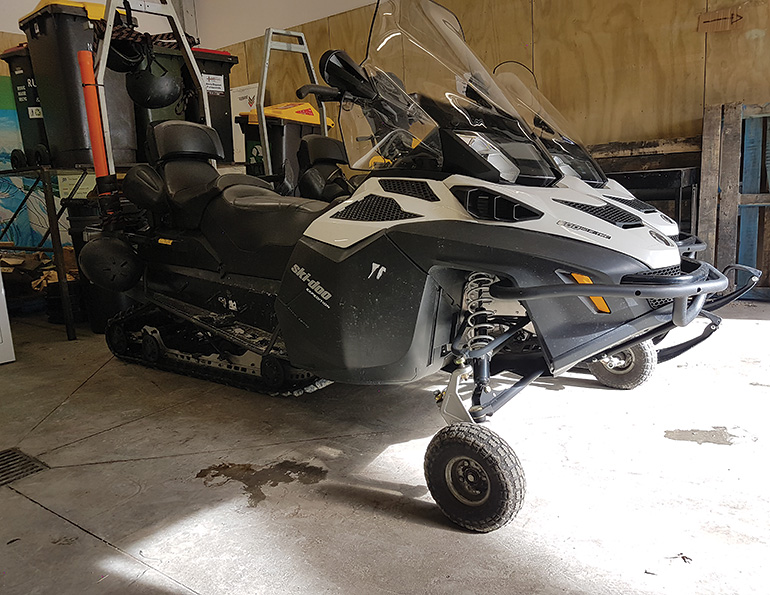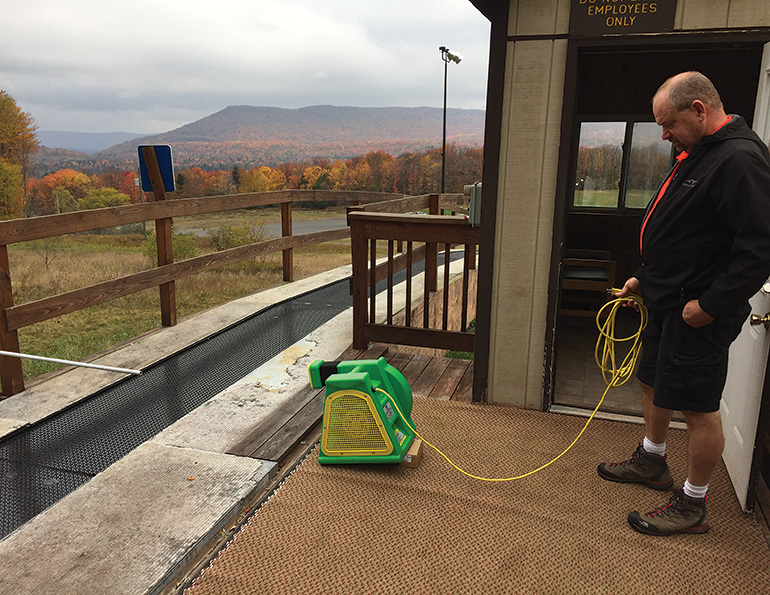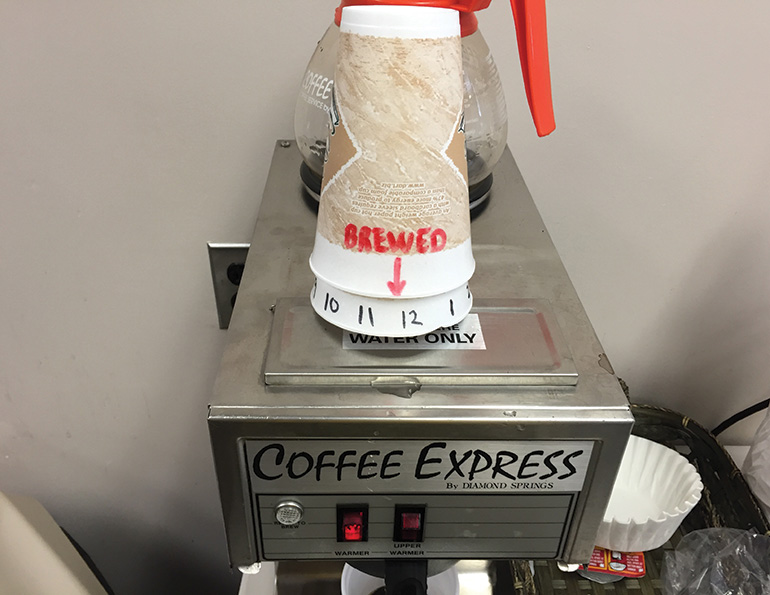POP A WHEELEY
 When winter ended at The Remarkables in New Zealand, it was time to pack everything up for the warm season. To get snowmobiles from snow to storage, the machines must run across dirt, concrete, and stone—something they weren’t meant to do. So, one of the guys on the maintenance crew “came up with this ingenious idea to save skid damage and wear,” says ski area manager Ross Lawrence. The crewmember replaced the snowmobile skids with wheels from a dysfunctional sack trolley—or, handcart, to us Yankees. The wheels slide straight onto the king pin frame, so removing the skids and putting on the wheels takes less than five minutes. Since the exchange is so quick and easy, the crew only made one set and used it to move all its machines. Lawrence estimates it will extend the life of the snowmobile skids by years, and it only costs a few minutes of labor.
When winter ended at The Remarkables in New Zealand, it was time to pack everything up for the warm season. To get snowmobiles from snow to storage, the machines must run across dirt, concrete, and stone—something they weren’t meant to do. So, one of the guys on the maintenance crew “came up with this ingenious idea to save skid damage and wear,” says ski area manager Ross Lawrence. The crewmember replaced the snowmobile skids with wheels from a dysfunctional sack trolley—or, handcart, to us Yankees. The wheels slide straight onto the king pin frame, so removing the skids and putting on the wheels takes less than five minutes. Since the exchange is so quick and easy, the crew only made one set and used it to move all its machines. Lawrence estimates it will extend the life of the snowmobile skids by years, and it only costs a few minutes of labor.
CONVEYOR BLOWER
 Like many conveyor lifts, the one at Canaan Valley, W.Va., is a top drive. When an excessive amount of snow gets into the mechanism, it can cause operational issues. Not only that, but clearing out the pit underneath the terminus of the conveyor is a pain. To mitigate this pain—at least after a snowstorm— mountain manager Mike Chaney repurposed an unused inflatables blower and parked it near the top of the lift to blow any gathered snowfall off the belt before it reaches the end. It’s only effective for the lighter, fluffy snow, but nonetheless, if snow fell overnight, rather than having to shovel the length of the conveyor, the operator simply starts up the blower, starts the conveyor, and voila—the belt brings the snow up, and the blower clears it right off, saving tons of time and labor.
Like many conveyor lifts, the one at Canaan Valley, W.Va., is a top drive. When an excessive amount of snow gets into the mechanism, it can cause operational issues. Not only that, but clearing out the pit underneath the terminus of the conveyor is a pain. To mitigate this pain—at least after a snowstorm— mountain manager Mike Chaney repurposed an unused inflatables blower and parked it near the top of the lift to blow any gathered snowfall off the belt before it reaches the end. It’s only effective for the lighter, fluffy snow, but nonetheless, if snow fell overnight, rather than having to shovel the length of the conveyor, the operator simply starts up the blower, starts the conveyor, and voila—the belt brings the snow up, and the blower clears it right off, saving tons of time and labor.
COFFEE TIME
 It’s pretty crummy to come in from a cold shift out on the hill only to find the hot coffee you’ve been looking forward to tastes like its been there since yesterday. How to determine at a glance when the coffee was made? Sam Geise saw this smart (and cheap) method at an aluminum plant in Virginia. All you need is two take-out coffee cups. Turn the cups upside down and write the numbers 1 through 12 around the rim of one—like a clock. On the rim of the other cup, draw an arrow. Stack them so the cup with the clock around the rim is on the bottom, then stack the other cup on top, with the arrow pointing to the time when the current pot of coffee was made. If you come in at 5 and the arrow is pointing at the 1, you might want to make a fresh pot—but don’t forget to twist the cup to update the time it was brewed.
It’s pretty crummy to come in from a cold shift out on the hill only to find the hot coffee you’ve been looking forward to tastes like its been there since yesterday. How to determine at a glance when the coffee was made? Sam Geise saw this smart (and cheap) method at an aluminum plant in Virginia. All you need is two take-out coffee cups. Turn the cups upside down and write the numbers 1 through 12 around the rim of one—like a clock. On the rim of the other cup, draw an arrow. Stack them so the cup with the clock around the rim is on the bottom, then stack the other cup on top, with the arrow pointing to the time when the current pot of coffee was made. If you come in at 5 and the arrow is pointing at the 1, you might want to make a fresh pot—but don’t forget to twist the cup to update the time it was brewed.





